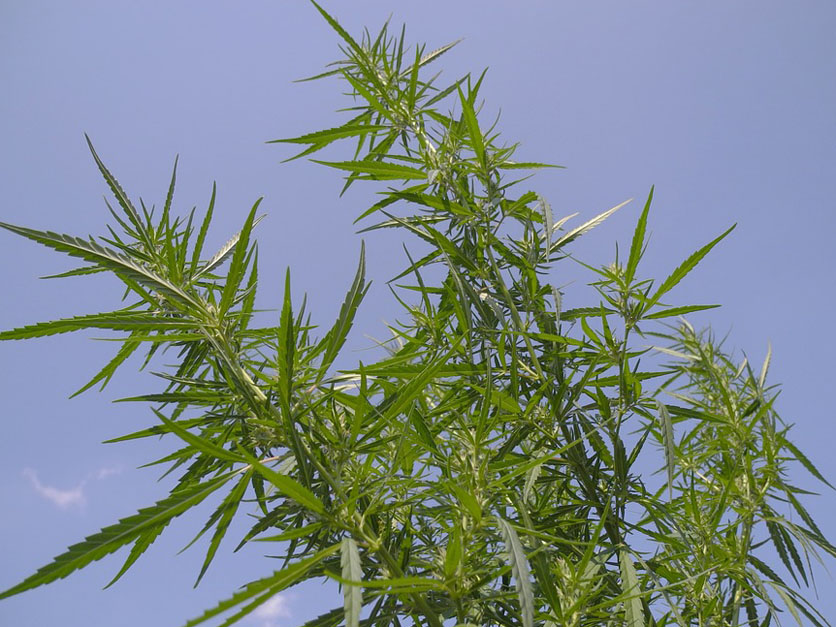States and industry groups are welcoming USDA’s new regulations for industrial hemp, but one longtime advocate is raising concerns that department's testing requirements could create a logjam at harvest time.
“Overall, we’re pleased with the regulations coming out,” said Vote Hemp President Eric Steenstra, who has been involved in the industry for more than 25 years. “We’re pleased USDA worked so quickly to try to do this.”
But he also said he is worried about the rule’s requirement that hemp must be tested at labs registered with the Drug Enforcement Administration. As defined in the 2018 farm bill, which removed it from the list of federally controlled substances, hemp contains 0.3% or lower of THC, or tetrahydrocannabinol, the psychoactive ingredient in cannabis that provides a “high” at much higher levels.
“That’s just going to be a bottleneck,” said Steenstra, since hemp growers all will be harvesting their crop within 30 to 45 days.
He questioned why DEA labs would be needed considering that hemp is not a controlled substance. “Congress specifically removed hemp from the Controlled Substances Act — they never said anything about DEA labs,” Steenstra said.
The interim final rule, which was released Tuesday and will be official when published Thursday in the Federal Register, reaffirmed an earlier opinion from USDA General Counsel Stephen Vaden that said interstate transportation of hemp is legal, even when the hemp is being shipped through states that have not legalized it.
Since the farm bill was passed in late 2018, some drivers transporting hemp have been detained or arrested. The issuance of the rule is likely to cheer lawyers representing companies and clients caught up in the legal system.
Only four states have not legalized hemp at this point: South Dakota, Idaho, Mississippi and New Hampshire.
Once the rule is published, states and tribes can begin submitting plans for approval by USDA’s Agricultural Marketing Service, which took the lead in crafting it. States and tribes that do not want to develop their own plans can use USDA’s framework.
USDA sought to “provide a fair, consistent and science-based” regulatory framework for states, tribes and individual producers to follow, Agriculture Secretary Sonny Perdue said Tuesday. Perdue said the rule is being issued, as promised, in time for the 2020 growing season.
Greg Ibach, undersecretary for marketing and regulatory programs, said USDA wants to hear from the public about the interim final rule, which will become effective Oct. 31 but will “sunset” after two years.
Undersecretary Ibach
“We will use the 2020 growing season as a chance to test-drive the interim rule to make any changes,” Ibach said on a conference call with reporters Tuesday.
Once state and tribal plans are in place, hemp producers will be eligible for a number of USDA programs, including insurance coverage through whole farm revenue protection.
Samples for testing “must be collected by a USDA-approved sampling agent, or a federal, state or local law enforcement agent authorized by USDA to collect samples,” the rule says.
The rule also says hemp crops must be destroyed by a person authorized under the Controlled Substances Act to handle marijuana if testing shows they exceed the “acceptable THC level” of 0.3% on a dry weight basis, also taking into account a measurement of uncertainty.
“For example, if the reported [THC] content concentration level on a dry weight basis is 0.35% and the measurement of uncertainty is +/- 0.06%, the measured [THC] content concentration level on a dry weight basis for this sample ranges from 0.29% to 0.41%,” the rule says. “Because 0.3% is within the distribution or range, the sample is within the acceptable hemp THC level for the purpose of plan compliance.”
The rule also says a producer is “negligent” if they produce a crop with a THC level exceeding 0.5%. “In cases where a state or tribe determines a negligent violation has occurred, a corrective action plan shall be established,” the rule says. “The corrective action plan must include a reasonable date by which the producer will correct the negligent violation.”
Steenstra questioned the “negligent” level, noting that even hemp with 0.6% or 0.7% could not pass as marijuana. He also said producers may need a longer window than the 15 days before harvest specified in the rule.
In general, statements issued right after the rule was released to the public were positive in nature.
“USDA has established a regulatory framework that will serve as an infrastructure for the U.S. hemp economy,” said Shawn Hauser, partner and chair of the hemp and cannabinoids practice group at the Vicente Sederberg law firm. “These interim rules provide long-awaited clarity, not only for farmers, but also for regulators and service providers like banks and insurance companies, who were hesitant to work with hemp-related businesses without federal guidelines.”
GenCanna, a vertically-integrated producer of hemp and hemp-derived CBD products in Kentucky, welcomed the rule.
“This large step forward bridges the 2014 farm bill's industrial hemp pilot program into the 2018 Farm Bill's commercialization of hemp production,” said Steve Bevan, president and executive chair of GenCanna. “We would expect that GenCanna and Kentucky's hemp farmers are well-positioned because the interim final rule is consistent with KDA's regulatory framework.”
Barb Glenn, CEO of the National Association of State Departments of Agriculture, said, “We appreciate USDA’s objective to evolve hemp regulations as the industry matures. We are all learning as this industry grows. The knowledge we have now will only multiply as the industry secures its place in American agriculture.”
In the rule, USDA estimates that producer returns from hemp-based product sales will go from $300 million in 2018 to $600 million by 2022.
“It is difficult to estimate the increase in total returns to producers as a result of this rule,” USDA said in the rule. “AMS estimates that this rule is responsible for as much as 50 percent of the increase in total producer returns from year to year.”
Producers and manufacturers are still waiting, however, for the Food and Drug Administration to weigh in with regulations on the safety of CBD products made with hemp flowers.
“If FDA does not provide clarity about their plans for future regulation of CBD, there will continue to be uncertainty and downward pressure on the CBD portion of the hemp market,” USDA said in the rule.
For more news, go to www.Agri-Pulse.com



